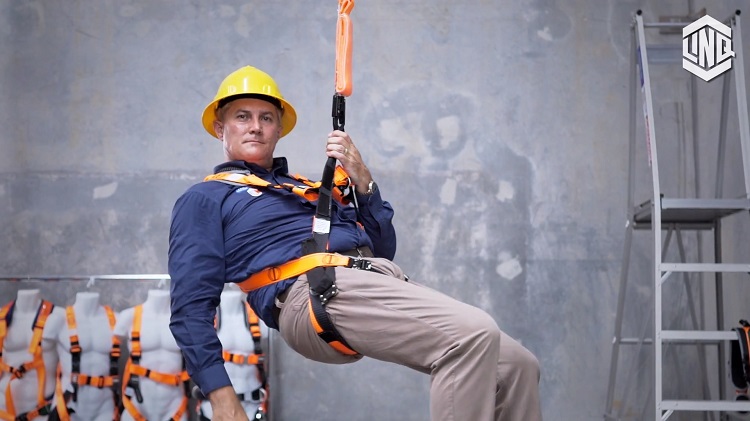
Suspension trauma occurs when a body is suspended motionless in an upright, vertical position, such as while awaiting rescue after an arrested fall in a harness.
Also known as orthostatic shock or intolerance, the onset of suspension trauma typically occurs within five to thirty minutes of the victim being suspended.
It can also become life-threatening if treatment protocols are not observed, making a quick rescue and appropriate first aid treatment critical.
What is suspension trauma?
Suspension trauma is a rapid sequence of events that begins with venous pooling in the legs and lower extremities due to a motionless, vertical orientation hindering the return of blood to the core.
In this early stage, the victim may experience hot flashes, sweating, numbness in the legs, dizziness, nausea, low blood pressure, confusion and an irregular or slow heart rate.
This can quickly lead to loss of consciousness as the body tries to achieve a horizontal position and return blood to the upper extremities.
But a victim stuck in a harness will not fall down. Instead, unconsciousness will result in an inability to protect their airways or move their legs to prompt blood flow, a situation which is exacerbated by the tourniquet effect of the harness straps on the legs.
Death may then occur in a number of ways: hypovolemic shock can lead to cardiac arrest and or brain damage during suspension and if this stage is reached this will lead to post rescue complications which can lead to renal failure.
Preventing suspension trauma:
According to LINQ Height Safety Gear’s chief technical officer, Stephen Sugden, the type of harness worn is the most critical preventative measure for workers, all of who are at risk of suspension trauma.
“Any person working at heights should be supplied with a harness with a suspension trauma strap or other mitigating equipment,” he said.
“This device must be easily deployed by the worker after a fall, and at a height or length suitable to take away pressure from the femoral artery.”
“Additionally, as the worker needs to be awake to do this, the harness should be designed to avoid knocking the person unconscious during a fall.”
This is a significant risk in harnesses which use a floating rear dee, which can break through the plastic holder and hit the wearer’s head at the moment of impact.
As a result, all LINQ harnesses are designed with a closed loop system to prevent movement of the dorsal dee during a fall.
First aid treatment of suspension trauma:
IMPORTANT NOTE: Medical treatment should only be performed by, or under the instruction of, trained medical personnel. The information in this guide is general only and should not be a reason to do or not do anything as each case will vary.
The first priority in treatment of a suspension trauma victim is getting them to the ground or another point of safety.
“If the fall victim is already unconscious then blood flow is already impaired and orthostatic shock has set in. Because orthostatic intolerance can present with complications similar to crush injury it is imperative to obtain instruction from a hospital trauma unit on how to treat the victim before the victim has been brought to ground. Complications such as renal (kidney) failure are a very real risk and great care should be exercised during and post rescue,” said Sugden.
“When you cut the victim down and immediately alleviate the pressure, you put the kidneys at a massive risk of renal failure,” he explained, noting that this effect is also seen in crush victims.
“The returning blood pressure is significant and when combined with the toxicity risks of deoxygenation, the two are extremely dangerous,” Sugden said.
The pressure should be released gradually, over approximately 40 minutes, and fluids and oxygen administered to help stabilise the circulatory system, he added.
“First aid responders would always be prudent in their treatment. Pressure release and post rescue treatment needs to be done by competent medical personnel.”
He also noted that the paramedics should be called as soon as possible and that if the patient presents with syncope (temporary loss of consciousness) in suspension state, or has been suspended for more than 20 minutes, such victims should always be hospitalised, where they will probably be treated as if for crush injury.
A fall victim that is conscious and suspended for less than 20 minutes is less likely to present with crush injury complications. A fast, efficient rescue after a fall is therefore always desired so as to decrease the risk of life-threatening suspension trauma.
Given a quick rescue can make all the difference in the case of suspension trauma, LINQ Height Safety has released a new RESQ Kit specifically designed for rapidly rescuing a suspended casualty from a fall arrest system.